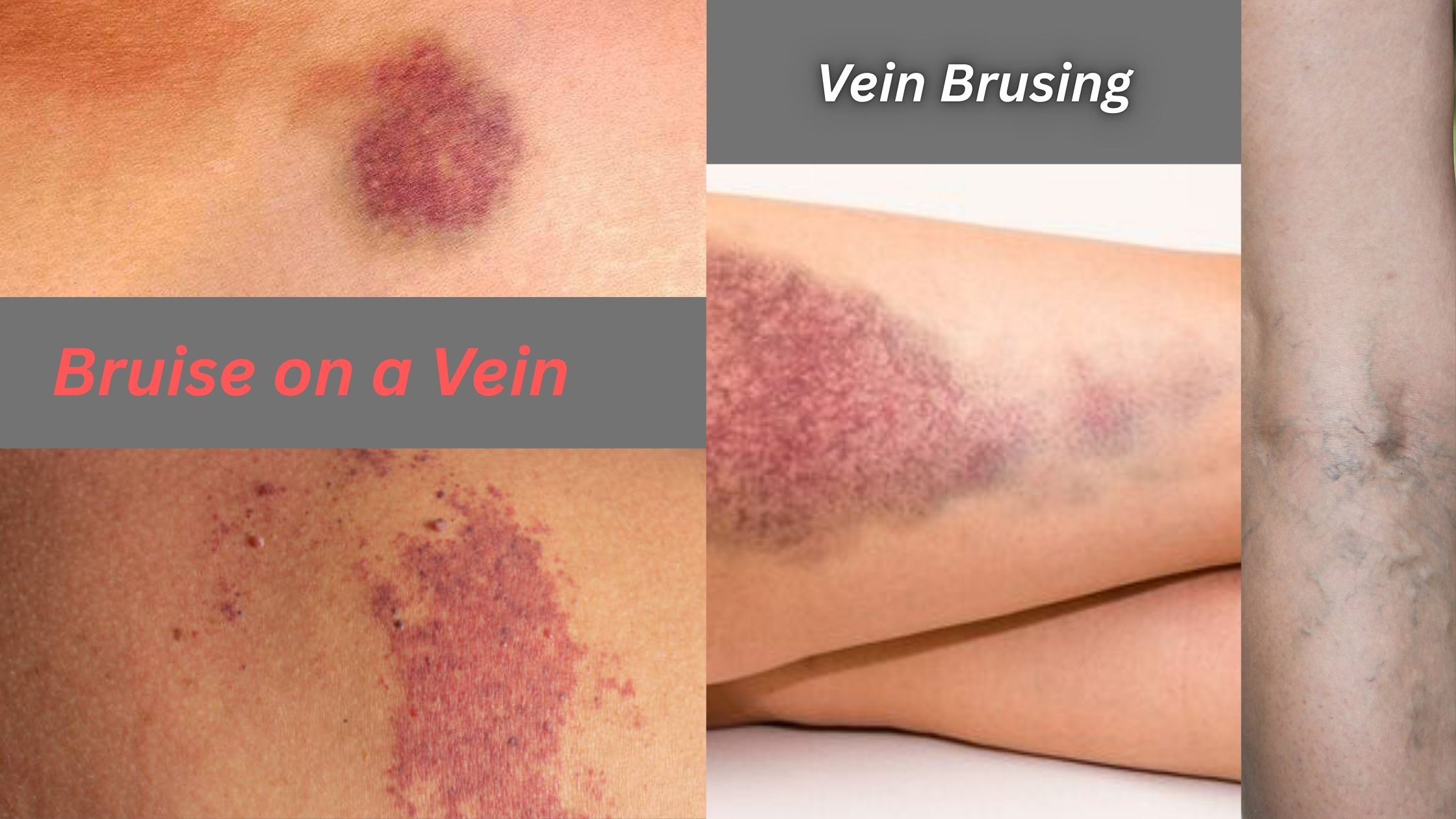It is common for injury to the veins (Bruises on veins), especially after a minor injury, but many times it also occurs when it can be a sign of a serious problem. Normally, scratch that appears after light injury or pressure is harmless and heals in a week or two. However, if the bruising evolves for no apparent reason, it is unusually large or persists for a long time, it may be a concern. Severe pain, swelling or heat with veins injuries can be a sign of underlying condition, such as a blood clot, veins swelling or bleeding disorder. Additionally, if the skin color around bruise discolored becomes hard or gentle, it may be a sign of deep tissue damage or infection.
People with circulation problems, blood disorders, or those taking blood-thinning medications must be especially careful, as they may bruise easily or have complications. Repeated or unexplained bruising of the veins requires medical evaluation to rule out conditions such as thrombophlebitis, varicose veins, or clotting abnormalities. While it is normal to get hurt sometimes, constant or serious cases shouldn’t be ignored, as beginner diagnosis and treatment can prevent potential complications. But what if you see an injury mark on the vein? Is this normal, or could it be a sign of some other serious disease? If you see unusual or anxious injury marks, always consult a healthcare professional.
In this article, we’ll break down everything you need to know about bruises on veins, including:
- What causes a vein bruise?
- When should you be concerned?
- Warning signs of serious conditions
- How to treat a bruised vein?
- When to see a doctor?
What Is a Bruise on a Vein?
When an injury (medically called a bruise) occurs, small blood vessels (capillaries) under the skin break, causing blood to leak into nearby tissues. This makes familiar black and blue marks. The vein injury occurs when the deep vein (large blood vessel) is injured, thereby more clearly changing in color, swelling or lumps too.
Common Causes of Vein Bruising
- Minor Injuries – Veins can bruise from accidents like stumbling, hitting furniture, or being struck
- Medical Procedures – Getting blood drawn, IV insertions, or injections may occasionally lead to bruised veins
- Thin Skin & Aging – As people age, their blood vessels weaken, making them more prone to bruising
- Medications – Blood-thinning medications (such as aspirin or warfarin) raise the risk of bruising
- Underlying Health Conditions – Certain medical conditions can impair blood clotting or weaken veins
When Should You Worry About a Bruised Vein?
Most veins injuries fix on themselves in 1-2 weeks. However, some symptoms can indicate a more serious problem.
Warning signs of serious conditions
- Severe Pain – If the injury is very painful and not getting fine, this could be a sign of deep injury or blood clots.
- Swelling that worsens – Light inflammation is normal, but if it rises over time, it may be a sign of poor blood circulation or clotting.
- Hard lump under the bruise – A solid, tender lump could mean hematoma (pooled blood) or ‘thrombosed vein’ (vein clotted).
- Skin discoloration that spreads – If the injury mark spread rapidly or turns dark purple/black, consult your healthcare provider immediately.
- Fever or warmth around the bruise – This can be a sign of infection (especially after medical procedures).
- Bruising without Injury – Repeatedly, injury marks for no reason may be indicated of bleeding disorders (such as hemophilia or low platelets).
Serious Conditions Linked to Vein Bruising
Although most injuries are harmless, some underlying conditions require medical attention:
Deep Vein Thrombosis (DVT)
- Blood clot in a deep vein (usually in the leg)
- Symptoms: Swelling in one leg, heat, redness and pain
- Risk if untreated: The clot can reach the lungs (pulmonary embolism), which is a threat to life
Superficial Thrombophlebitis
- The clot in the surface vein, due to which very often becomes a vein like hard, red, tender cord-like vein
- Common after IVs or varicose veins
- Usually not dangerous but can be painful
Bleeding Disorders
- Conditions like hemophilia, leukemia or low platelets can get highly injury
- Look for: Repeatedly bleeding from the nose, bleeding from the gums, or heavy menstruation
Varicose Veins & Poor Circulation
- Weak veins can rupture easily, leading to bruising
- May cause chronic swelling, leg pain, or skin changes
How to Treat a Bruised Vein at Home
For minor bruises, try these steps:
R.I.C.E. Method
- Rest – Avoid straining the area
- Ice – Apply for 15 mins every hour (reduces swelling)
- Compression – Light bandaging helps (but don’t wrap too tightly)
- Elevation – Raise the limb to reduce blood pooling
Pain Relief
- Use acetaminophen (Tylenol) for pain (avoid aspirin/ibuprofen if on blood thinners).
Arnica or Vitamin K Cream
- May help speed up healing (though evidence is mixed).
Warm Compress (After 48 Hours)
- Helps dissolve trapped blood once swelling goes down.
When to See a Doctor
Seek immediate medical help if you have:
- A bruise that keeps expanding
- Severe pain & swelling
- Shortness of breath (possible blood clot in lungs)
- Signs of infection (pus, fever, red streaks)
- Unexplained bruises all over the body
Schedule a check-up if:
- Bruises appear frequently without cause
- You’re on blood thinners & notice excessive bruising
- The bruise doesn’t fade in 2 weeks
Final Thoughts: Should You Be Worried?
Most bruises on the veins are harmless and get healed by themselves. However, if you see too much pain, swelling, heat or injury marks for no reason, it’s best to check. Caring at home fix minor bruises in 1-2 weeks. Keep an eye on red signs such as spreading color changes or hard lump. DVT, infection and bleeding disorders should be treated immediately. Consult the doctor when doubtful—it’s better than regretting that, be careful already.
